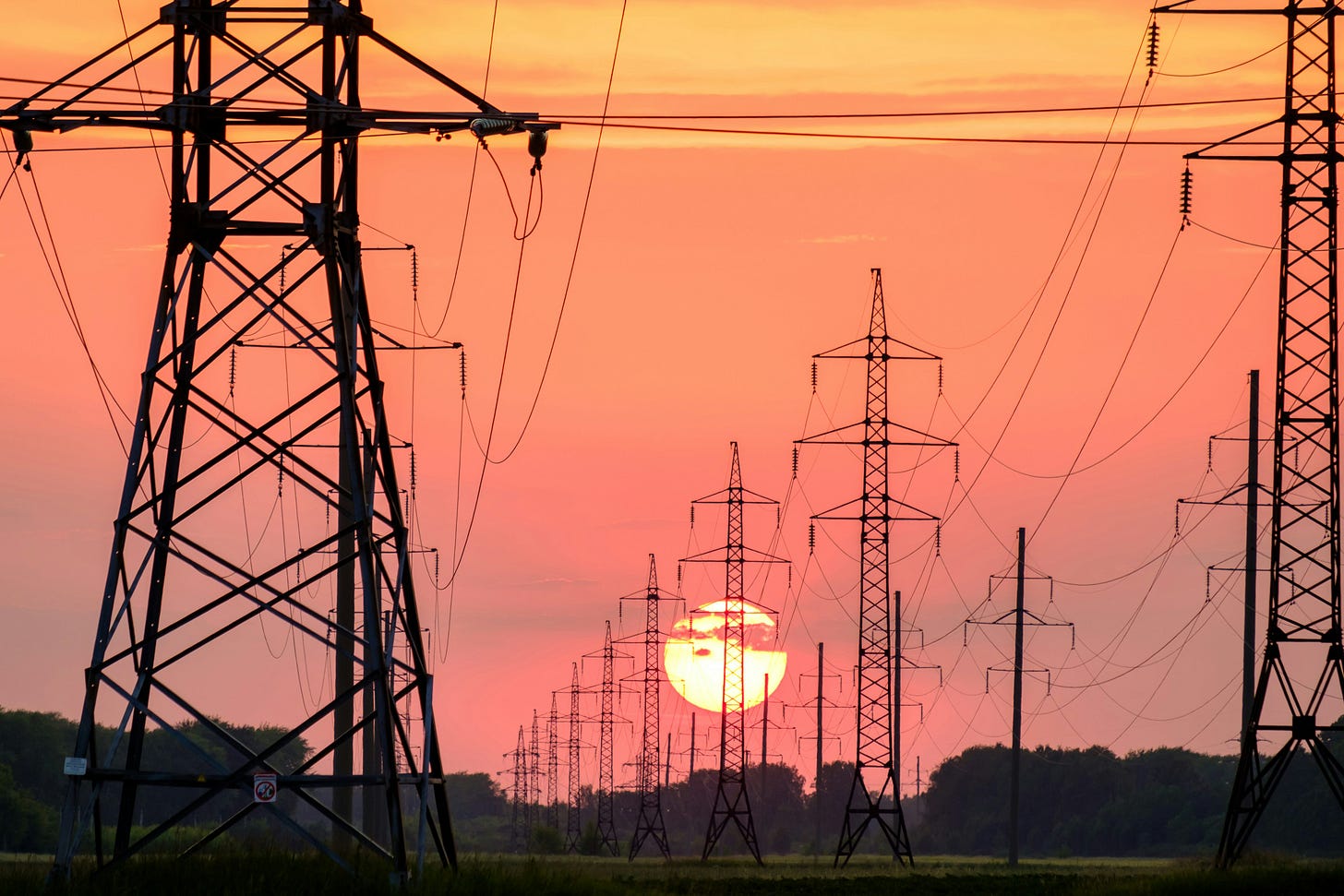In this issue:
Why the best climate narratives may not focus on climate
Capitalizing on stories that bridge business and sustainability
How to develop a persuasive story: a G.R.E.A.T. framework any business can use
The best narratives for driving sustainability don’t always center directly on sustainability, especially in a complex economy like today’s. This is not only true in the US, where climate remains a highly political topic, but for companies globally.
In today’s post, we’ll walk through a practical framework for business storytelling and positioning. Developing effective stories for a given audience requires understanding their situation and how it affects them, so let’s start there.
The Situation
Access to low-cost renewables has rescued businesses and families in Pakistan despite energy price hikes and disruptions.
Geopolitical events have caused the cost of natural gas to shoot up, causing rolling blackouts, drops in grid electricity purchases, and work stoppages.
As pointed out by Azeem Azhar and Nathan Warren of Exponential View, “...Energy is wealth. There are no wealthy energy-poor countries.” Yet while electricity purchases from the grid have fallen by 10% in the last couple of years, the economy has grown by 2%.
This defies the conventional fossil fuel economy narrative — that countries must scramble and take on debt to maintain their supply of electricity needed for growth.
The reason, as Azham and Warren report: individuals, families, and small businesses have purchased cheap solar panels en masse.
The solar buying spree is so widespread, it’s estimated to have added nearly 30% to the country’s total electricity generation capacity — in the first half of 2024 alone!
Recognizing key narratives that bridge business and sustainability
Looking at this scenario as a background for business storytelling, a crucial point is that this rapid expansion of renewable energy production has not been driven primarily by environmental concerns.
Not that Pakistanis are unaware of climate change. In fact, a 2023 World Bank report showed 80+% were very concerned about it, especially regarding their children’s future. However, as in many countries, the report stated, “...it is not always their top priority.”
Instead, the solar array purchases stem from the rising cost and falling reliability of grid electricity, the availability of cheap Chinese panels, and the people’s desire for security and economic prosperity.
Nikkei Asia quoted a Lahore business owner identified as Saif ur Rehman, who had purchased a solar array for his office: “Now I can get peace of mind and focus on my business with uninterrupted access to electricity all day long and don't have to worry about load shedding.”
These are important contextual data points which reveal the problems, motivations, and desires behind this boom — with the quote providing specific wording useful in storytelling.
Application: the G.R.E.A.T. framework for persuasive storytelling
The key to creating a story that drives sustainable decisions and purchases is to find and use the above kinds of data to:
discover the critical problems your customers are facing (or will soon),
understand the emotional drivers at play, and
offer a solution that solves the problem(s) while benefiting the planet.
“All people resonate with stories that speak to their circumstances and their feelings about them.”
Many persuasive narrative models exist, but for today, we’re pleased to introduce the G.R.E.A.T. story framework. This model involves a protagonist overcoming a challenge through innovative new action. It’s especially useful for climate and sustainability solutions, because they’re all about bucking the status quo and reimagining how we do things.
Such stories can be used formally in your business communications strategies as well as informally at parties, networking events, and so on.
Here are the steps of the framework:
G: Ground the situation
R: Raise the issue
E: Envision the solution
A: Address concerns
T: Transform reality
Let’s explore how to craft a compelling narrative that serves both business and sustainability goals. The key is that the protagonist represents your audience. In this example, the storyteller is a Pakistani solar retailer or installer, and the protagonist is a potential customer.
G – Ground the Situation
Set the stage with a realistic picture of the existing conditions and the audience's current beliefs or behaviors.
We all need electricity to run our businesses and live our lives. Like most people, Saif ur Rehman used to think he had no choice but to rely on the government and utilities to provide it.
R – Raise the Issue
Introduce a compelling challenge or obstacle that makes the status quo untenable or less desirable.
With energy prices going through the roof and all the blackouts these days, he was having trouble running his office. His operation would have to shut down multiple times a week, and orders were always behind. His business was supporting a large household and all of his employees’ families, and he wasn’t sure it was going to last another year!
E – Envision the Solution
Show how the protagonist (or a relatable figure) confronts and overcomes the challenge (or could reasonably do so) by adopting new beliefs and strategies.
Rehman knew about solar energy but had never seriously considered it for himself before. But suddenly, he was seeing more and more people getting their own systems and found out prices had dropped as much as 60%.
A – Address Concerns
Acknowledge the audience’s objections and doubts, showing why the protagonist moved past them.
Rehman was still concerned about the cost, as well as getting quality equipment, and not getting scammed. Fortunately, he came to see us. We listened to all of his needs and concerns, and quickly designed a system with the best components for his building and his budget — at no cost. He was thrilled to learn that with today’s prices he can pay off the investment in just a few years and have free, reliable electricity for years to come. With Pakistan’s great net-metering laws, he can even sell extra power back to the grid at a good rate!
T – Transform reality
Demonstrate the positive impact and transformative effect of the proposed solution in terms of experiences and feelings, to provide both emotional inspiration and logical reasoning for the audience to make a new choice.
Rehman said he loves not having to worry about load shedding anymore, and having uninterrupted access to electricity all day long and complete peace of mind to focus on his business!
Taking your story a step further
While the above example provides a useful and relatable narrative, the more you know about your audience, the more relevant details you can include.
For example, knowing that most of the population is concerned about the impact of the climate crisis on today’s children, the last section could also include, “He’s also doing his part to fight climate change and protect our children’s future.”
This model works in the US, Europe, or any other market — because all people resonate with stories that speak to their circumstances and their feelings about them. For example, a US solar installer might include info about IRA tax incentives, changing net-metering laws, or (depending on the audience) values like liberty and patriotism.
It’s also important to know where the intended audience is in their decision-making process. Someone who’s worried about high electricity prices and blackouts but has not seriously considered potential solutions will need insight into why solar panels are a great option.
On the other hand, someone who already knows they want solar panels will need to be shown how to avoid common pitfalls and what to look for in a provider, e.g., certifications, training, local ownership, guarantees, or exclusive deals.
The goal of your story is to make the audience see a more compelling alternative to their current belief system and demonstrate, through the narrative, why making the recommended change is not only beneficial, but the only sensible option.
Remember:
Make your story relatable.
Make it authentic and emotional.
Make the audience member the hero, not you.
Happy storytelling!
Things we noticed this week:
The Emerson Science Fair at Climate Week in New York provided a delightful walk through possibilities for the future
Cheaper Faster Better by Tom Steyer has rightly been getting a lot of buzz
Helene caused emergency declarations across five states, making planning for a disaster more complicated than ever before.






